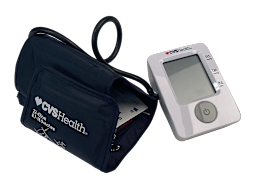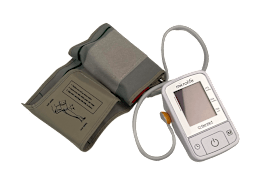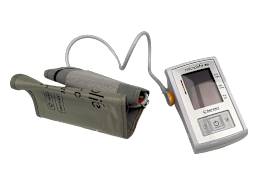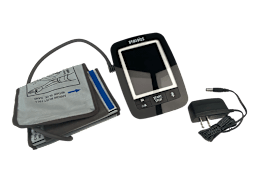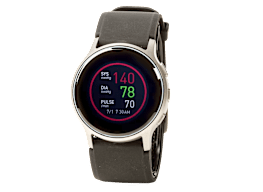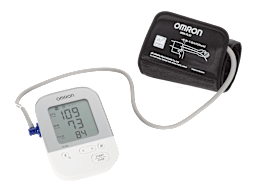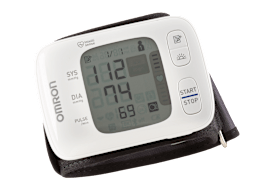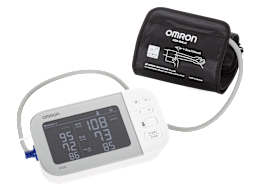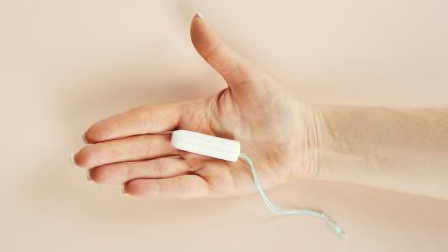Measuring Your Blood Pressure With a Wearable Device Isn't a Great Idea—Yet
Some smartwatches and fitness trackers are starting to read this vital measurement, but the technology isn't fully developed
When you shop through retailer links on our site, we may earn affiliate commissions. 100% of the fees we collect are used to support our nonprofit mission. Learn more.
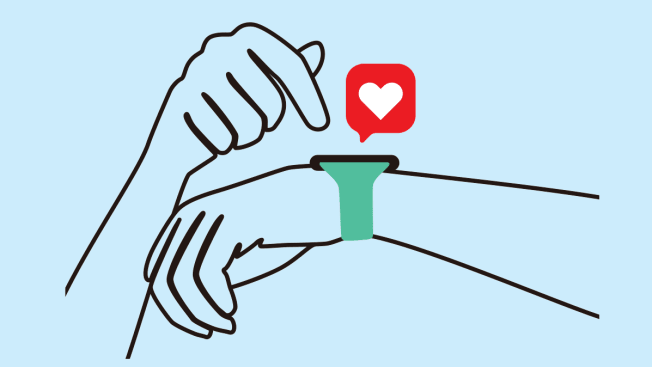
If you have high blood pressure, home monitors can be a great way to track your levels and keep them under control. Most of the devices currently available are versions of what your healthcare provider uses: stand-alone devices with cuffs that you apply to your wrist or upper arm.
But smartwatches and fitness trackers are starting to get in on the action, too, along with other cuffless devices, including smart rings, facial scanners, and even toilet seats.
Why Cuffless Isn't Ready for Prime Time
1. You’ll still need to use a monitor with a cuff, at least sometimes. A traditional monitor measures blood pressure by sensing the pressure exerted by blood on an artery. That’s what is happening when the cuff tightens and then relaxes around your arm.
Smartwatches, fitness trackers, and other devices that aim to measure your blood pressure without an inflated cuff, however, do things differently. They gather other biological data from your body and use that to approximate your blood pressure. A number of devices do this by using optical sensors to detect the movement of blood inside your body. A common metric that can be used to estimate blood pressure, called pulse transit time, represents how long it takes a pressure wave created by a heartbeat to travel between two points along an artery.
From a consumer perspective, however, there’s a major limitation with these types of technologies. They can only measure relative changes in your blood pressure, not absolute numbers. To get a blood pressure reading from these devices, you first have to establish a baseline by using a standard blood pressure cuff and entering the data into the device. That calibrates the device to your body and allows it to provide you with blood pressure readings expressed in the familiar ratio of systolic to diastolic blood pressure measured in millimeters of mercury (for example, 120/80 mmHg).
Moreover, for devices that work in this way, you need to periodically repeat that process. Samsung Galaxy Watch, which offers this capability (though not yet to consumers in the U.S.), requires calibration with a reading from a cuffed device every 28 days. That means you’d likely need to have a cuffed home blood pressure monitor on hand anyway.
There’s another big issue with these methods for detecting blood pressure. They’re generally based on the same type of optical sensing used in pulse oximetry. And as research has found with pulse oximeters, this optical technology is sometimes inaccurate in people with darker skin.
2. Experts aren’t yet sure how to verify cuffless monitors’ accuracy. Scientists have settled on standards for testing the accuracy of traditional digital, cuff-based blood pressure monitors. But those standards don’t apply to available consumer cuffless devices and can’t be used to validate their accuracy, says Ramakrishna Mukkamala, PhD, a professor of bioengineering and anesthesiology at the University of Pittsburgh who has studied cuffless blood pressure technologies. That’s one reason he urges caution to people considering using them.
3. Your doctor may not be able to use the data you collect. Even if we currently had a trustworthy way of validating cuffless devices’ accuracy, it’s unclear how your doctor might interpret the blood pressure data your fitness tracker, watch, or other device collects.
Protocols developed by experts regarding how to make medical decisions based on blood pressure measurements are for the most part built based on blood pressure readings taken at rest, and under very specific circumstances (you’re sitting in the correct position, not talking, having rested for a full 5 minutes beforehand, etc.). But what might it mean to have data on your blood pressure while you’re working, exercising, having a conversation, or participating in all the other activities of your daily life?
“As clinicians, we’re going to be faced with a lot of info that we don’t know how to use,” says Tammy Brady, MD, associate professor of pediatrics at Johns Hopkins University School of Medicine in Baltimore and co-chair of the Association for Advancement of Medical Instrumentation Sphygmomanometer Committee.
Wearable With an Inflating Cuff
A few smartwatches purport to measure blood pressure in the standard way, using an inflatable cuff.
For example, Omron, a leader in traditional home blood pressure monitors, has introduced a model that has an inflatable cuff built into the wristband of a fitness tracker. CR tested the Omron Healthcare HeartGuide BP8000-M Blood Pressure Monitor along with other cuffed blood pressure monitors.
While Omron blood pressure monitors typically score high in CR’s ratings, the HeartGuide did not. In fact, it was the lowest-rated of any model we tested. At $499, it was also the most expensive.
CR’s testing has found that monitors with a cuff that you wear on your wrist are generally not as accurate as those with a cuff that you put on your upper arm. Still, wrist monitors can be useful for people who have a hard time finding an arm cuff that fits them, and we’ve found several models that perform well in our tests. The HeartGuide, however, received a very low score for accuracy when we evaluated it, and our testers found it somewhat hard to use.
“With wrist monitors, it is difficult to position them correctly for the most accurate reading,” says Susan Booth, CR’s test engineer in charge of blood pressure monitor testing.
Carol Lucarelli, Omron Healthcare’s director of marketing and e-commerce, told CR that the device is “held to the same standards as all other blood pressure monitors in our portfolio” and that many customers report that using the monitor has helped them make taking their blood pressure a regular habit. “As a wearable, it is essential that the size, fit, and placement be correct for accuracy,” she said. She also encouraged anyone having challenges with fit to contact Omron customer service.
Since we didn’t test other monitors of this style, we can’t say for sure how well they’ll perform.
CR's Advice
For accuracy and reliability, stick with devices that use an inflating cuff. You can check out a list of validated devices from the American Medical Association here. And CR members can find our full blood pressure monitor ratings here.
Whichever monitor you try, remember that blood pressure can vary depending on activity, emotions, and other factors. To get the most accurate readings, take these steps, even in the doctor’s office.
- Don’t smoke, drink caffeine, or exercise for at least 30 minutes beforehand.
- Use the bathroom and then rest without talking for 5 minutes before the reading.
- Place the cuff on your bare upper arm at heart level.
- Sit on a sturdy chair with a supportive back, with your cuffed arm on an armrest or a table and your feet flat on the floor.
If you buy a standard home blood pressure monitor, the American Heart Association recommends taking it to your healthcare provider’s office to check its results against results from the equipment in the office.
Recommended Blood Pressure Monitors
Here are three blood pressure monitors that earned high scores in CR’s tests. Members can see our full ratings here.



















